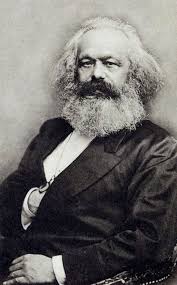Lesson Two: Exploring Collectivism and the Common Good
| Site: | MoodleHUB.ca 🍁 |
| Course: | Social 30-2 RVS |
| Book: | Lesson Two: Exploring Collectivism and the Common Good |
| Printed by: | Guest user |
| Date: | Monday, 27 October 2025, 8:15 AM |
1. Introduction
Exploring Collectivism and the Common Good
Issue Question: Should ideology be the foundation of identity?
_________
Key Issue: Should the values of collectivism shape an ideology?
Duration: 3 blocks (80 mins each + homework)
While some people believe the values of individualism are most important, other people believe that the goals of society should be emphasized above the individual and thus express a belief in collectivism. Collectivists believe that people function best by acting as part of a larger group. Collectivists are concerned that not only should government provide security for people but that all individuals need to be helped in getting their basic necessities as well, much like in a ZOO, where the animals are provided with food, shelter and medical care.
According to collectivists, the best way to meet the needs of an individuals is to put all individual and government efforts toward the common good. By establishing order in society, collectivists believe that the needs of the individual are provided for in a SECURE and SAFE environment.

2
2. Resources
Textbook
Read and refer to chapter three as your resource for completing this lesson's assignment.
3. Lesson
Now let's take a closer look at collectivism.
Please watch this video on collectivism.
As you watch the video list the SIX PRINCIPLES OF COLLECTIVISM
Now more about collectivism.
Please complete chapter three questions from Understandings of Ideologies, pages 66-89 in order to develop your a better understanding of collectivism and the common good.
Understandings of Collectivism (p. 68-69)
- Six central values of collectivism are listed on page 69, what are they?
Early Collectivist Ideas (p.69-70)
- Why were the earliest human societies organized around the idea of collectivism?
- In the First Nations worldview, what is:
- The role of the individual in society?
- The source of the community’s strength?
Political Expressions of Collectivism (p. 71-72)
- Jean-Jacques Rousseau and Thomas Hobbes are two political philosophers whose views supported collectivism. Briefly summarize:
- Rousseau’s idea of the social contract:
- Rousseau’s idea of the collective will:
- Hobbes’ view on the best form of government:
- Karl Marx is another famous collectivist thinker. What kind of society did Marx envision?
Collective Interest and Collective Responsibility (p. 72-74)
- What is “collective interest”?
- Organizations are often formed as a way of expressing collective interest. Identify the collective interest of:
- OIL (La Francophonie):
- The AFN (Assembly of First Nations):
- Labour Unions:
8. The idea of collective responsibility has two aspects. List these two aspects.
9. Read the voices box on page 74.
a. What is the main idea of Jesse Halton’s quote?
b. Do you consider the effects of your decisions on others? If yes, why? If no, why not?
Collective Responsibility and the Legal System (p. 74-76)
10. In aboriginal cultures, sentencing circles are a way of expressing collective responsibility. Using the description provided on page 76 of your textbook, explain how a sentencing circle works by discussing the following:
a. Who is present
b. The goal of the sentencing circle
c. What happens in the process
Collective Responsibility in North Korea (p. 76-77)
11. How is the idea of “collective responsibility” used in North Korea?
Roots of Collectivism in Economics (p. 78-79)
12. How did the Industrial Revolution contribute to the development of collectivist ideas?
Integrating Values of Collectivism and Individualism (p. 79-80)
13. Canadian society integrates the values of both individualism and collectivism. In Canada, what are some examples of:
- Canadians valuing self-reliance, individual achievement and competition?
- Canadians valuing collective responsibility, redistribution of wealth, and cooperation?
14. Read the headlines on page 80. Which ones reflect individualism? Which ones reflect collectivism?
Public Property (p. 81-82)
15. What were Karl Marx’s views on property?
16. What is a:
- Crown corporation?
- Cooperative?
17. We all adhere to collective norms of one sort or another. Give an example of a collective norm you adhere.
Social Expressions of Collective Responsibility (p. 87)
18. How are anti-bullying campaigns examples of collective responsibility?
Self check your answers here.
Now you have learned about the opposing beliefs behind political and
economic ideologies it is important for you recognize that individuals,
societies and countries can hold individualist economic beliefs and
collectivist political beliefs.
Please watch this video on the COMBINED GRID to learn more.
As you watch the video answer the following questions:
A. Which system is on the horizontal of the grid?
B. Which system is on the vertical of the grid?
C. What do you call systems that combine political freedom and economic control?
D. What do you call systems that combine political freedom and economic freedom?
E. What do you call systems that combine political control and economic freedom?
F. What do you call systems that combine political control and economic control?
To summarize the lesson watch this video on Individualism and Collectivism Through Dance.
4. Conclusion
In this lesson you learned that in a collectivist society, individuals are asked to co-operate NOT compete and demonstrate collective responsibility. Through co-operation, individuals begin to see past the idea of caring only for themselves and see the larger picture of needing to work together to achieve common goals.